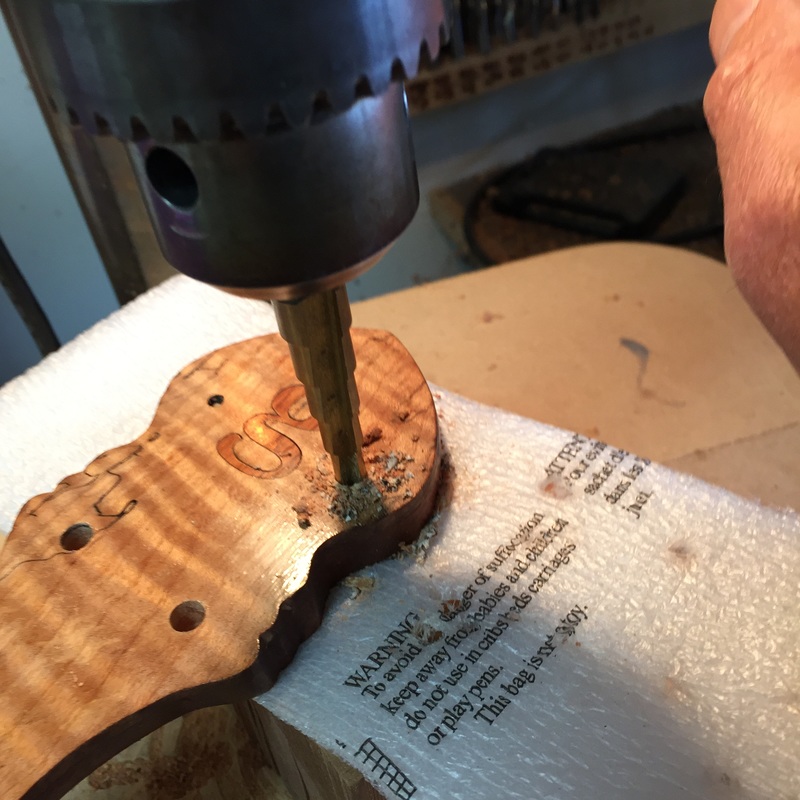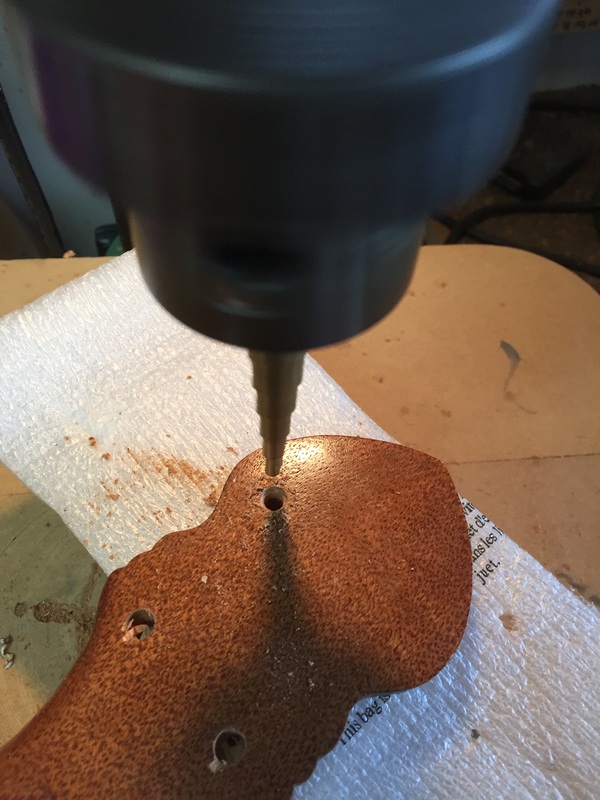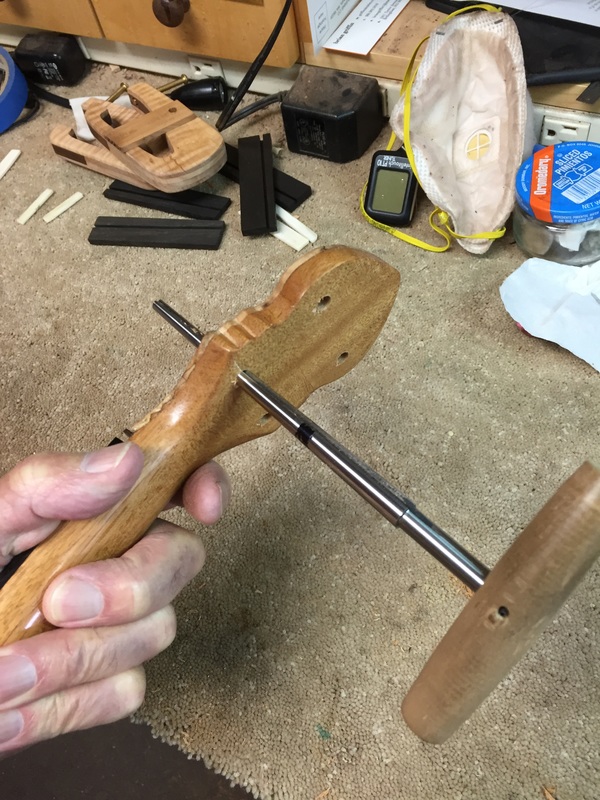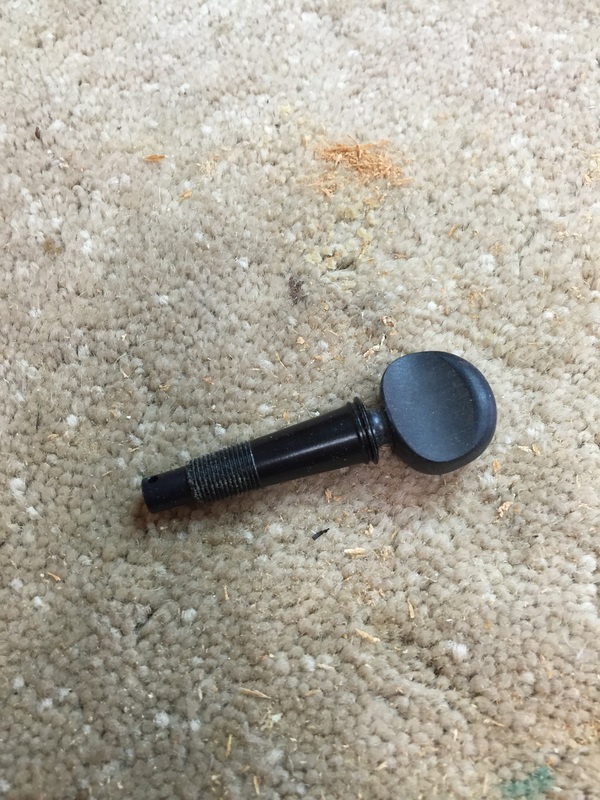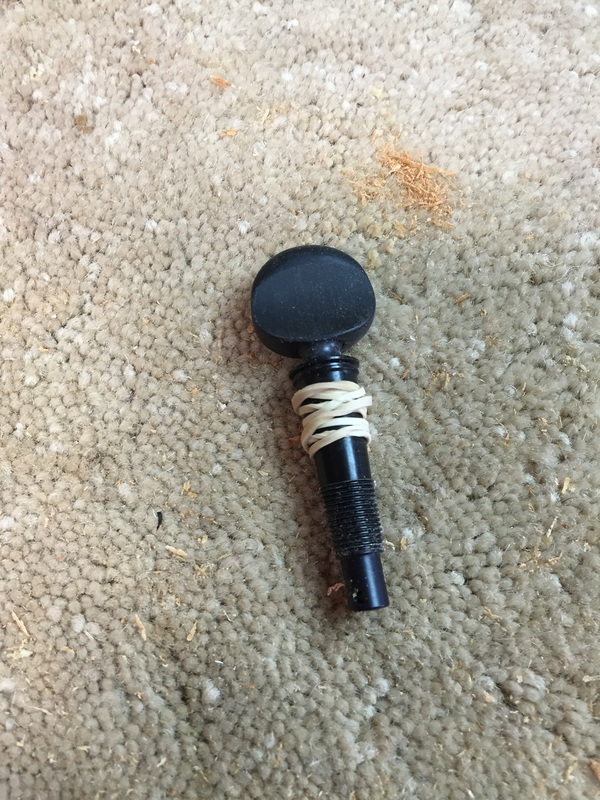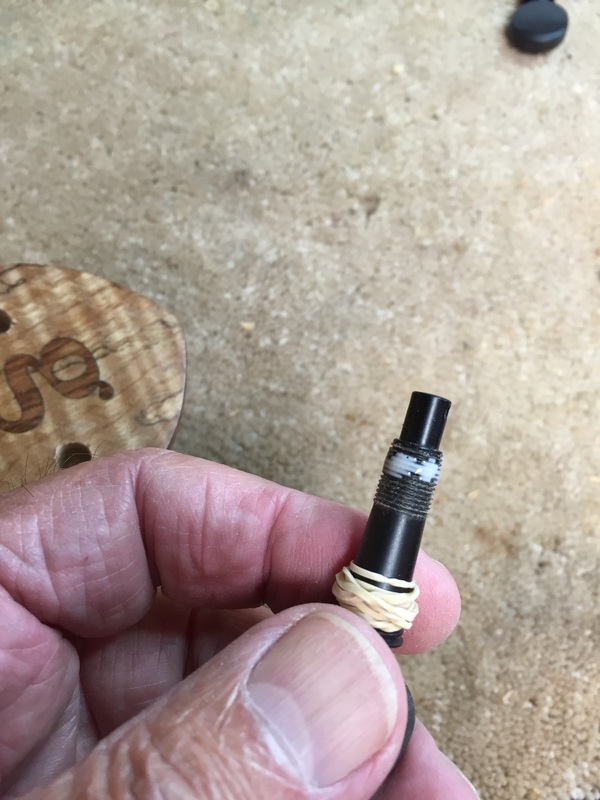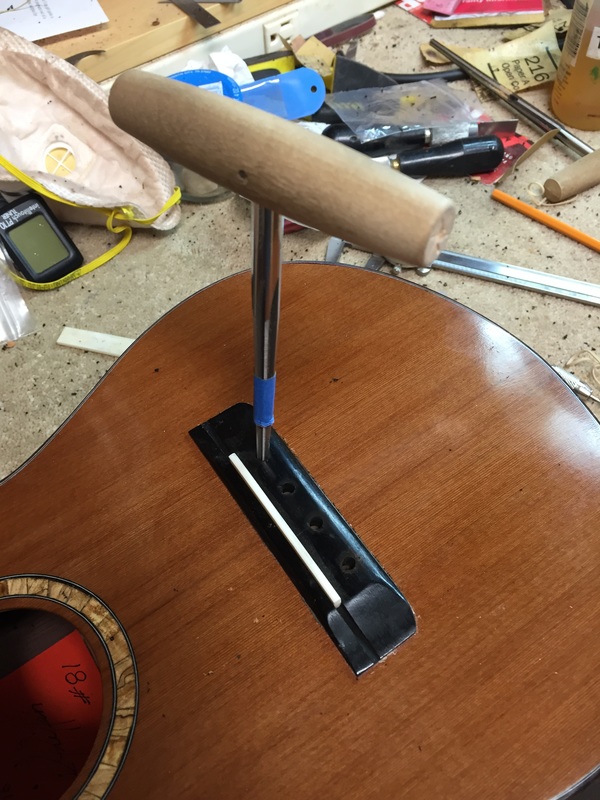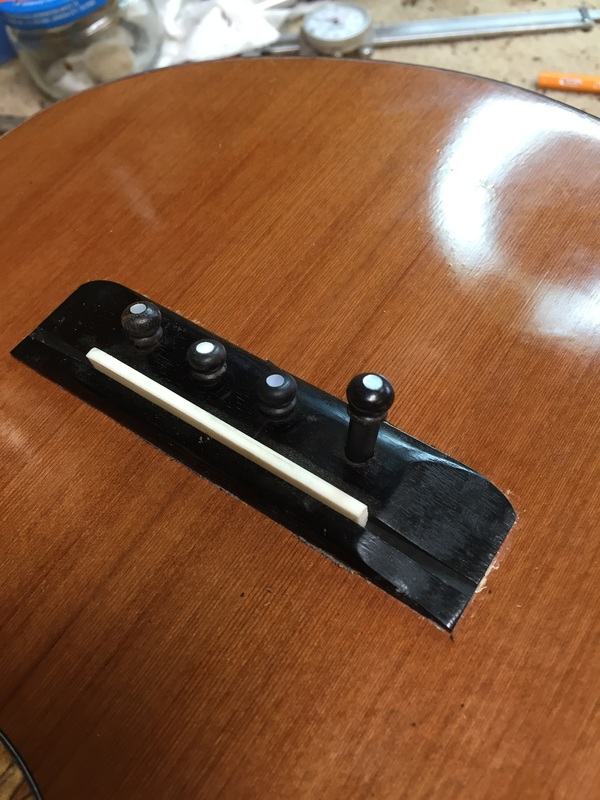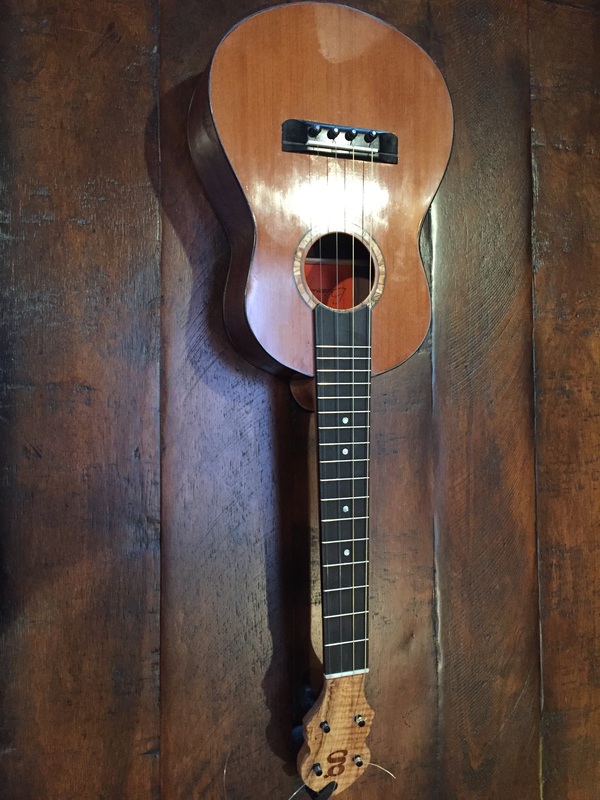| I have found that a step drill bit made for cutting holes in metal, works better than normal drill bits. It cuts a hole without tearing out on the down side. I drill the top side first and when the bit penetrates the stock I turn it over and finish from the underside. I get very little tear-out that way. |
| Now at the other end of the string, you must prepare for the string pin, I used to just drill a hole for the string here, but I have changed to pins. I like the looks and I like the ease of changing strings. This is another tapered auger, The trick is determining where to drill the hole. Be very careful here. The strings must be in the correct position on the fretboard and that is determined by where you drill this hole. | Here are the string pins, three in position, one still being installed. Be very careful with the auger. A tiny twist and the pin sets deeper. The pin must not be loose. It wants to be snug and tight. Beware, the pins will be of different sizes by a tiny bit. Seat each one individually. When seated, with a tiny Exacto saw I cut a small groove in the center edge to accept the string. |
